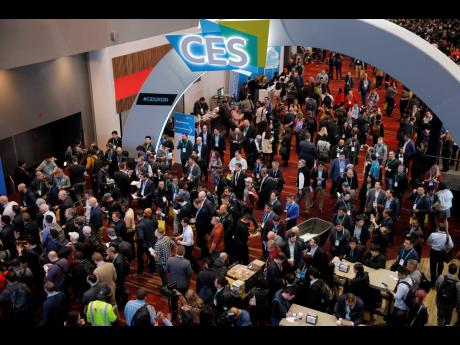Gadget show going virtual
Every January, huge crowds descend on Las Vegas for the CES gadget show, an extravaganza of tech and glitz intended to set the tone for the coming year in consumer technology. CES kicks off this week, but thanks to the pandemic, it will be in a radical new format: a “virtual” show taking place only in cyberspace.
Yes, that means that everyone can still get a glimpse of the future, but only via technology of the future – aka video streams and chat. If all goes well, attendees will be able to marvel at COVID-fighting ‘coronabots’, artificial intelligence-powered avatars, and transparent TVs.
But it is still not entirely clear exactly how all this all is going to work or whether the show will generate anything resembling its usual boosting impact on the tech industry.
“It’s different. Obviously, we’re not going to be in Las Vegas. We’ll be spread out around the world,” said Gary Shapiro, president of the Consumer Technology Association, the trade group that produces CES. “But I think there’s an attitude that because of COVID, that we’re all in this together, and that is what the CES is about. It’s really the shared experience of the industry. Everyone just wants to come together.”
The show will be a trade-off, Shapiro said. Forget the attention-getting spectacles like dazzling wall-high TV displays and Google’s theme-park ride from two years ago. Instead, Shapiro said, there will be a chance for a more personalised experience that attendees can set up in advance based on their particular interests.
That is the optimistic view. On the flip side, smaller exhibitors are less likely to get noticed without a show floor. Serendipitous meetings between entrepreneurs and investors, potential acquirers and acquirees, job-seekers and employers – all common to the world’s largest tech show – will probably be scarce.
More than 150,000 attendees and 1,800 exhibitors will take part in CES from Monday to Thursday, a show that will now consist of virtual keynote speeches, product demonstrations, and panel discussions. Plus, there’s the opportunity to network in virtual meeting rooms. Last year in the physical show, there were about 170,000 attendees and 4,400 exhibitors. The number of exhibitors were capped this year at 2,000 to ensure that the online experience, which is being run by Microsoft, was optimal.
Tim Bajarin, president of consultancy Creative Strategies, insists that not much has changed about CES for him despite the fact that he will be staring at screens rather than haunting meeting rooms and pacing the convention floor. He is still researching products he wants to see demos of, scheduling meetings with people he wants to talk to one-on-one, and focusing on keynotes and sessions to attend.
“The difference is I’m not there physically having to walk 10 miles a day, and I’m not paying exorbitant high hotel fees,” he said. “I’m not having to battle people shoulder-to-shoulder to navigate the show floors.”
But smaller companies and start-ups might find it harder to stand out. While CES has gone to great lengths to let attendees search through exhibitors by topic and interest categories, the site still can be tricky to navigate. When the show is in Las Vegas, its “Eureka Park” is an area where you can wander – aimlessly or with purpose – through hundreds of booths extolling new internet-connected gadgets, unglamorous back-end technology services, or anything else you might want.
Online, you can search for ‘Eureka Park’ or ‘startup’, but what you get is a seemingly endless set of pages bearing the logos of 600 companies, 12 at a time – and no description of any of them.
AP


